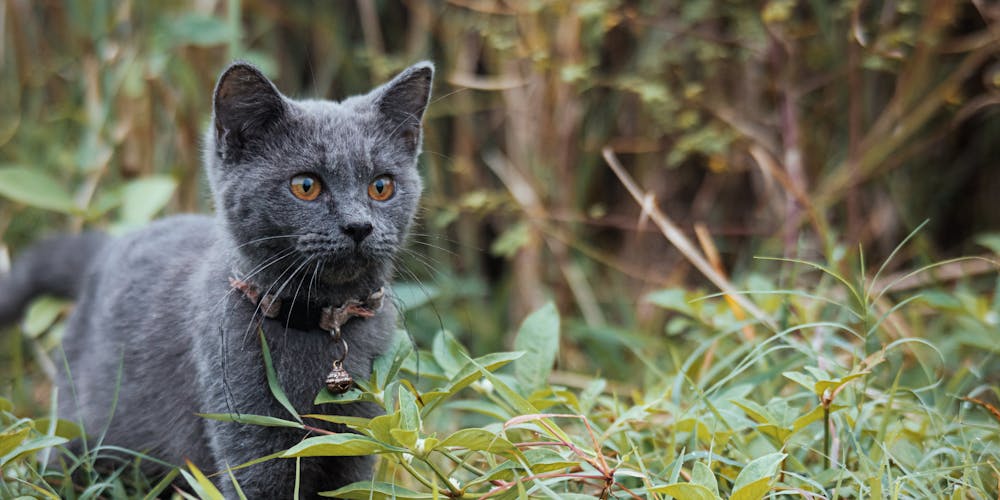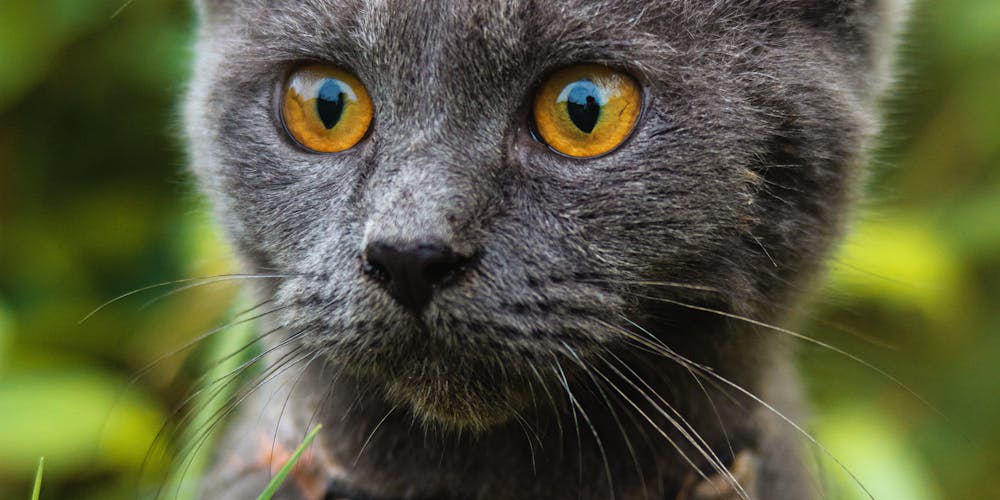In the vast world of feline breeds, there lies a creature of extraordinary beauty, charm, and an air of mystery— the Russian Blue cat. With its captivating blue-green eyes, silvery-blue coat, and a demeanor that exudes both calmness and playfulness, it's no wonder that these cats have captured the hearts of cat enthusiasts worldwide. Their rarity and exclusive bloodlines only add to the allure, making them one of the most sought-after breeds sought-after worldwide.
Introducing the Russian Blue: A Feline Treasure Worth Millions

The Russian Blue is a breed that radiates an aura of enigma and time mystery. Its captivating blue-green eyes, reminiscent of a clear summer sky, hold an inexplicable allure that reflects both serenity and intelligence. Their silvery-blue coat, soft and silky to the touch, shimmers under the light, creating a mesmerizing spectacle. These felines often wear an expression of aloofness, giving them an air of regal indifference that is both endearing and intriguing.
This noble cat has been revered for centuries, with its origins dating back to ancient times. It is believed that the Russian Blue was first discovered in the port city of Arkhangelsk, Russia, where it was known as the Archangel Blue. However, there are also theories that suggest it descended from sailor cats that traveled across the Baltic Sea, bringing their enchanting presence to various ports.
Unveiling the Enigmatic Charm of the Russian Blue

The Russian Blue's striking appearance is what sets it apart from other breeds. Its coat is short, dense, and plush, with a unique double layer that gives it a shimmering effect. The color of the coat can vary from a light silver-blue to a deep slate grey, with each hair having a silver tip that creates a sparkling effect. This is known as "tipping" and is a characteristic unique to the Russian Blue.
The most distinctive feature of the Russian Blue, however, is its mesmerizing eyes. They are almond-shaped and can range from a bright emerald green to a deep sea blue, giving them an almost hypnotic quality. Their eyes are also set wide apart, giving them a look of intelligence and alertness.
The Russian Blue's Unique Coat Color
| Coat Color | Description |
|---|---|
| Silver-blue | The most common color for Russian Blues, with a light silver-blue coat that shimmers under light. |
| Slate grey | A deeper shade of blue, often with a bluish-grey or lavender undertone. |
| Black | A rare color for Russian Blues, with a solid black coat that has a glossy sheen. |
Exploring the History and Origin of the Russian Blue: A Legacy of Nobility

The Russian Blue's history is steeped in legend and mystery, making it one of the most intriguing breeds in the feline world. It is believed that these cats were first brought to Europe by sailors who traded with Russia, and they quickly gained popularity among the aristocracy due to their regal appearance and charming demeanor.
In the late 19th century, the Russian Blue was officially recognized as a breed in England, where it was known as the Archangel Cat. However, during World War II, the breed nearly faced extinction due to the bombing of Leningrad, where many of the cats were bred. Fortunately, a few dedicated breeders managed to save the Russian Blue, and it eventually made its way to the United States in the 1940s.
Today, the Russian Blue is still considered a rare breed, with only a handful of reputable breeders worldwide. Its exclusive bloodlines and limited availability have made it a highly sought-after cat, with some individuals selling for tens of thousands of dollars.
The Russian Blue's Influence in Art and Literature
The Russian Blue's captivating appearance has inspired artists and writers for centuries. In literature, they have been depicted as intelligent and mysterious creatures, often associated with royalty and nobility. One of the most famous literary references to the Russian Blue is in Edgar Allan Poe's short story, "The Black Cat," where the narrator's beloved cat, Pluto, is described as having "eyes like those of a Russian Blue."
In art, the Russian Blue has been immortalized in paintings and sculptures, with its striking features often seen as a symbol of elegance and grace. One notable example is the painting "Blue Cat" by French artist Jean Metzinger, which portrays a Russian Blue sitting on a windowsill, gazing out at the world with its piercing green eyes.
Unraveling Unique Traits of the Russian Blue: A Symphony of Beauty and Grace
Aside from their stunning appearance, the Russian Blue also possesses unique physical and behavioral traits that make them stand out among other breeds. These traits are a result of their noble heritage and have been carefully preserved by breeders over the years.
Physical Characteristics of the Russian Blue
- Medium-sized body with a muscular build
- Long, elegant legs with small, oval paws
- Wedge-shaped head with high cheekbones and a straight nose
- Large, pointed ears that sit high on the head
- Thick, plush coat with a double layer and silver tipping
- Almond-shaped eyes that can range from bright green to deep blue
Behavioral Traits of the Russian Blue
- Intelligent and curious, with a love for exploration and play
- Affectionate and loyal towards their owners, but reserved around strangers
- Quiet and gentle, with a soft voice that is rarely used
- Highly adaptable and able to thrive in different environments
- Independent and self-sufficient, but also enjoy human companionship
Delving into Temperament and Personality of Russian Blue: A Gentle Soul with a Playful Spirit
The Russian Blue's temperament is one of its most endearing qualities. They are known for their calm and gentle nature, making them ideal companions for families with children or other pets. They are not overly demanding and are content to spend hours lounging in their owner's lap or playing with their favorite toys.
However, the Russian Blue also has a playful side that comes out when they are in the mood. They are highly intelligent and enjoy interactive games and puzzles, which can keep them mentally stimulated and entertained. This breed is also known for its love of heights, so providing them with tall scratching posts or cat trees is essential for their well-being.
Tips for Bonding with Your Russian Blue
- Spend quality time with your cat, whether it's through playtime or cuddling.
- Provide them with plenty of mental stimulation, such as puzzle toys or interactive games.
- Respect their need for alone time and do not force them to interact if they are not in the mood.
- Be patient and consistent in your training, as Russian Blues can be sensitive to changes in routine.
- Show them love and affection, as they thrive on attention from their owners.
Ensuring Proper Care for Your Russian Blue: Nurturing a Healthy and Happy Companion
The Russian Blue is a relatively low-maintenance breed, with their short coat requiring minimal grooming. However, like all cats, they still require proper care and attention to ensure their health and well-being.
Diet and Nutrition
A high-quality diet is crucial for the overall health of your Russian Blue. They are prone to obesity, so it's important to monitor their food intake and provide them with a balanced diet. Consult with your veterinarian for recommendations on the best food for your cat's specific needs.
Exercise and Playtime
Despite their calm demeanor, Russian Blues still require regular exercise to keep them physically and mentally stimulated. Interactive play sessions or access to a safe outdoor area can help fulfill their need for physical activity.
Health and Wellness
Russian Blues are generally healthy cats, but like all breeds, they are prone to certain health issues such as dental problems and heart disease. Regular check-ups with a veterinarian are essential to catch any potential health concerns early on.
Finding the Finest Russian Blue Breeders: A Journey to find Reputable Sources
As mentioned earlier, the Russian Blue is a rare breed, and finding a reputable breeder can be a challenging task. It's crucial to do thorough research and only purchase from a breeder who is dedicated to preserving the breed's standards and health.
Here are some tips for finding a reputable Russian Blue breeder:
- Do your research and read reviews from other buyers.
- Visit the breeder's facility and ask to see the cats' living conditions.
- Ask for health certificates and genetic testing results for the kittens.
- Get to know the breeder and ask questions about their breeding practices and experience.
- Avoid purchasing from pet stores or online sellers, as these are often sources of kitten mills.
Celebrating the Russian Blue in Art and Literature: A Muse that Inspires
The Russian Blue has captured the hearts of many artists and writers throughout history, serving as a muse for their creative works. Their striking appearance and enigmatic nature have made them a popular subject in various forms of art, from paintings and sculptures to literature and films.
One notable example is the 2016 animated film "Kubo and the Two Strings," where one of the main characters, Monkey, is a Russian Blue cat. Her character is portrayed as wise, protective, and fiercely loyal, reflecting the traits often associated with this breed.
Witnessing the Russian Blue's Achievements: A History of Awards and Accomplishments
The Russian Blue has been recognized as a breed by various cat associations worldwide, including The International Cat Association (TICA) and the Cat Fanciers' Association (CFA). They have also made their mark in the show ring, with many Russian Blues winning top awards for their exceptional beauty and grace.
Some notable achievements of the Russian Blue include:
- In 2012, a Russian Blue named "Zarina" won Best Cat at the TICA International Show.
- In 2018, a Russian Blue named "Kissables Silver Bullet" was awarded Best Cat at the CFA International Show.
- In 2020, a Russian Blue named "GRC Kissables Silver Lining" was awarded Best Kitten at the CFA International Show.
Russian Blue: A Costly Investment Worth Every Penny
Due to its rarity and exclusive bloodlines, the Russian Blue is considered a luxury breed, with some individuals selling for tens of thousands of dollars. This high price tag may seem excessive to some, but for those who are passionate about this breed, it is a small price to pay for such a unique and cherished companion.
The cost of a Russian Blue can vary depending on factors such as lineage, age, and location. However, it's important to remember that the initial purchase price is just the beginning. Owning a Russian Blue also comes with additional costs such as food, grooming, and veterinary care.
Conclusion
In conclusion, the Russian Blue is a breed that exudes an air of mystery and elegance, making it one of the most coveted cats in the world. Its striking appearance, combined with its gentle nature and playful spirit, makes it a perfect companion for any cat lover. Whether you're drawn to its enigmatic charm or simply appreciate its beauty, the Russian Blue is a feline treasure worth every penny. So, if you're lucky enough to have one in your life, cherish them and enjoy the endless love and joy they bring.
Nhận xét
Đăng nhận xét